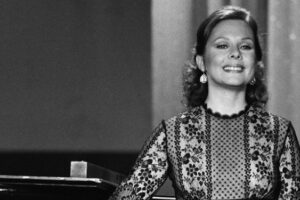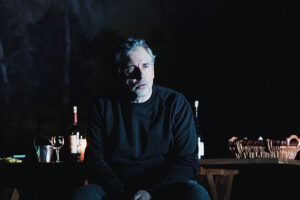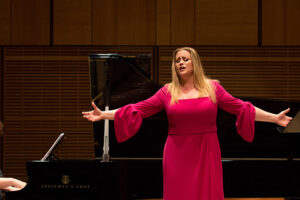

Theater (not least opera) is all about illusion, and horny boys are often played by women, lecherous ladies enacted by men. But we live in a time when still more unusual stories come to light all the time. Each idiosyncrasy adds to the sum of human possibility: strangeness is the thing we don’t yet know, or don’t yet comprehend. Art aims to make the Other comprehensible, extending the human range.
All this to introduce the premiere, Thursday night, of As One, an opera about a boy growing up to discover that he is a girl. There is nothing sexually undefined about the presentation. H. is played by both a very male baritone, who sings of his paper route, his determination to be the best athlete in his high school, and a very female mezzo-soprano, who sings of learning to flirt and dealing with artificially induced hormonal surges. They perform in a single intercut, sometimes harmonized, narrative voice. They conclude at first harmonized, then (as he fades out) as one triumphant female.
Laura Kaminsky’s score, tonal but edgy, melodically subdued and rhythmically forward, is played by the Fry Street Quartet (two women, two men, all barefoot and sometimes singing along), led by Steven Osgood. The opera lasts a well-focused 80 minutes. The backdrop, which covers many years, ranges from suburban paper route to traveling the bridge between “two (metaphorical?) cities” to assault in a parking lot to great freeing empty northern expanses, is a black-and-white film created by Kimberly Reed, who made the prize-winning documentary Prodigal Sons, about her own transgender youth. Reed co-wrote the libretto with Mark Campbell; it is a general tale of transformation, not specific to any person’s experience. The opera runs through Sunday at BAM’s new Fisher Space around the corner from the original Academy building.
Kaminsky is composer in residence for American Opera Projects, which commissioned the piece. Her most striking virtue, to an opera lover, is that she knows how to write for the voice, permitting beautiful voices to demonstrate their beauties, hitting emotional chords without torturing the instrument as “modern” composers of a bygone era so often did. The fifteen free-form narrative “songs” into which As One is divided are not imitative of any song style or aria manner, but flow in a stream of recollection and incident. Reminiscences of earlier moments appear in the later discoveries, following the patterns our memories discover in repeated experience, in later understanding brought to earlier experience.
In a post-premiere talk-back, Kaminsky spoke of using the viola, linchpin of any string quartet, as the join between the male and female personalities of H. The “boyish” music of the early scenes seems to be founded on a half-ironic “country square-dance” tune/rhythm from the first violin. As H. penetrates more deeply into his/her secrets, the cello sustains a deep melody agitated by pizzicati from the second violin. A tentative sweetness warms the singers’ loneliness at the moment when H., on a bus, hears the three words from a stranger that mean so much to him/her: “Pardon me, miss.” (A friend of mine currently undergoing the change said hearing these words for the first time made her, too, aware of a solution to her personality puzzle: that a female personality was perceptible outside as well as within.)
The charm of a tentative coffeehouse flirtation is subtly presented. Slashing rhythms underline the shock of an attempted assault, enacted by the mezzo while, in the background, the baritone sings statistics of the murders around the world. The entire tiny musical forces expand thrillingly with distant visions of Norwegian skies and H’s acceptance of her transformation. (Examples of songs from the opera can be heard on the BAM website.)

By this time he has been joined on stage and in the role by Sasha Cooke, whose dulcet, sorbetto-sounding mezzo, her English-horn-sounding mezzo, her powerful and supple mezzo has given me tremendous pleasure at NYFOS, at the Met and at Caramoor, where I heard her becoming a woman in Frauenliebe und -leben. Here she plays the girl inside Hanna and the fully fledged woman “H” grows up to be, ecstatically tossing coloratura to the fjords, but there are many pauses and confusions and puzzlements along the way. For a long time, H has no one but himself to confide in, and Markgraf and Cooke find solace in sharing their single self. They briefly sing the lines of other folk, but they manage to be each other simultaneously.
The timely self-exploration with singers of a lieder temperament and a multimedia approach to staging is one of the ways new opera is evolving: brief, slight and thrifty. Kaminsky mentioned wishing for elephants and orchestras for her first opera; maybe she’ll get film of an elephant in the next one. But she could hardly have it introduced more delicately and lovingly than As One has been at BAM.
Photos: Ken Howard























Comments